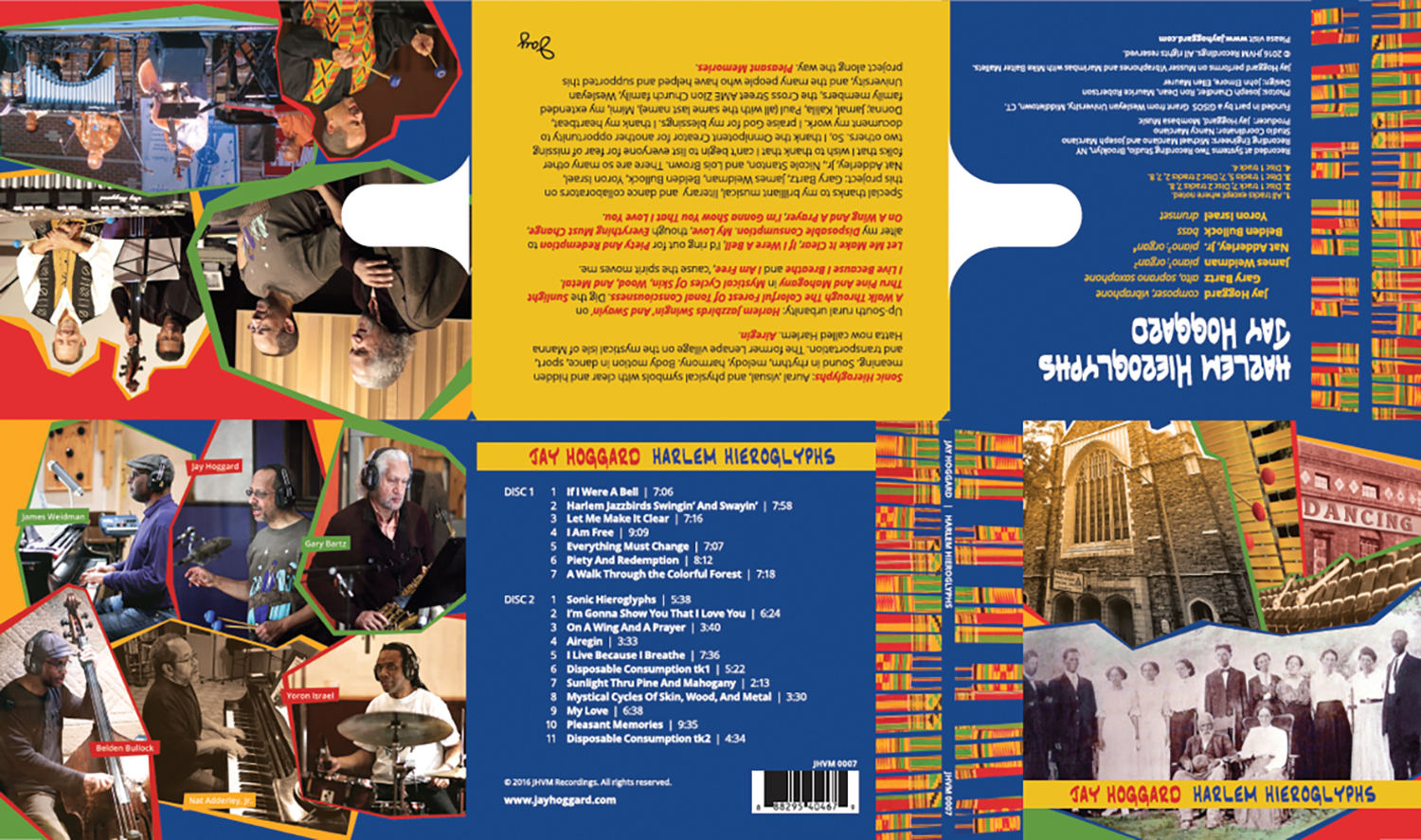ALL THAT IS JAZZ

Harlem Hieroglyphs, the new album by Adjunct Professor of Music Jay Hoggard ’76, MA ’91, represents both the culmination of all his previous work as well as a new direction. The paradox fits seamlessly into his life—and to all that is jazz, he explains. He’ll be giving a concert at his Reunion this May based on this album and reprising one that he’ll have given in April. Also in April, the piece that is his collaboration with Associate Professor of Dance Nicole Stanton and Professor of English and African American Studies Lois Brown, titled Storied Places, will be performed. It will be the professors’ culmination of a year-long Collaborative Cluster of courses grouped under the title “Migrations.”
The new compositional direction that fascinates Hoggard is toward an implicit narrative thread, such as that framed in the word “migrations.” This is the concept with which he created Harlem Hieroglyphs, a two-CD set begun when he was on sabbatical last year that takes a listener through “a spectrum of jazz—standards from musical theater to an extended form they call ‘rhythmic’ jazz.
“All the jazz greats—Dizzy Gillespie, Miles Davis—they’ve all left their sonic hieroglyphs in the music we now play,” he says. “Every composition on this record is an exploration of how I have come to think the way I do and what has brought me to hear music from the angle that I do.”
And while students in the Collaborative Cluster may have dealt with the concept of migration in general terms, Hoggard was thinking about the specific one that brought his family from a farm in North Carolina—where his great-grandfather was born into slavery in the first half of the 19th century—to New York City.
The photos in collage on the CD cover tell this story: “That’s Wright Cherry, my paternal great-grandfather, with my grandmother with her siblings on their farm in North Carolina. There’s the Mother AME Zion Church, where I spent a lot of time as a child. That’s the Renaissance Ballroom—the place you’d go to hear music—but it’s been torn down. In 2016, it’s nothing to travel from North Carolina to New York City—but in the early days of jazz? That was a journey, a real migration.”
Hoggard anticipates the spring’s performances, looking forward to the venues: the CFA Theater and Crowell Concert Hall. “People are tired of going to hear jazz in a basement venue half the size of this practice room,” he says. He acknowledges that the fluidity of improvisational jazz will have to conform slightly to allow dancers to inhabit the music, knowing what to expect.
As for collaborative art: “It is mystical and it’s something that—you just can’t explain. People ask me, ‘How did you both know to end there?’ It’s the communicative experience. And that’s been part of the experience of working with dancers. I’ve asked, ‘How did y’all know how to do that together?’ Well, they just know. What I call improvisation is spontaneous composition. It’s extemporization in the context of a compositional format.
“Any musical moment has these multiple layers—melody, harmony and rhythm—and so you are manifesting in the middle of that, melodically and rhythmically, and reacting to the harmonic structure. That’s where the genius is in jazz. It’s like 10-dimensional chess: there’s melody, harmony, and rhythm identifiable parts, but then there’s all the rest—and it’s mystical.”

